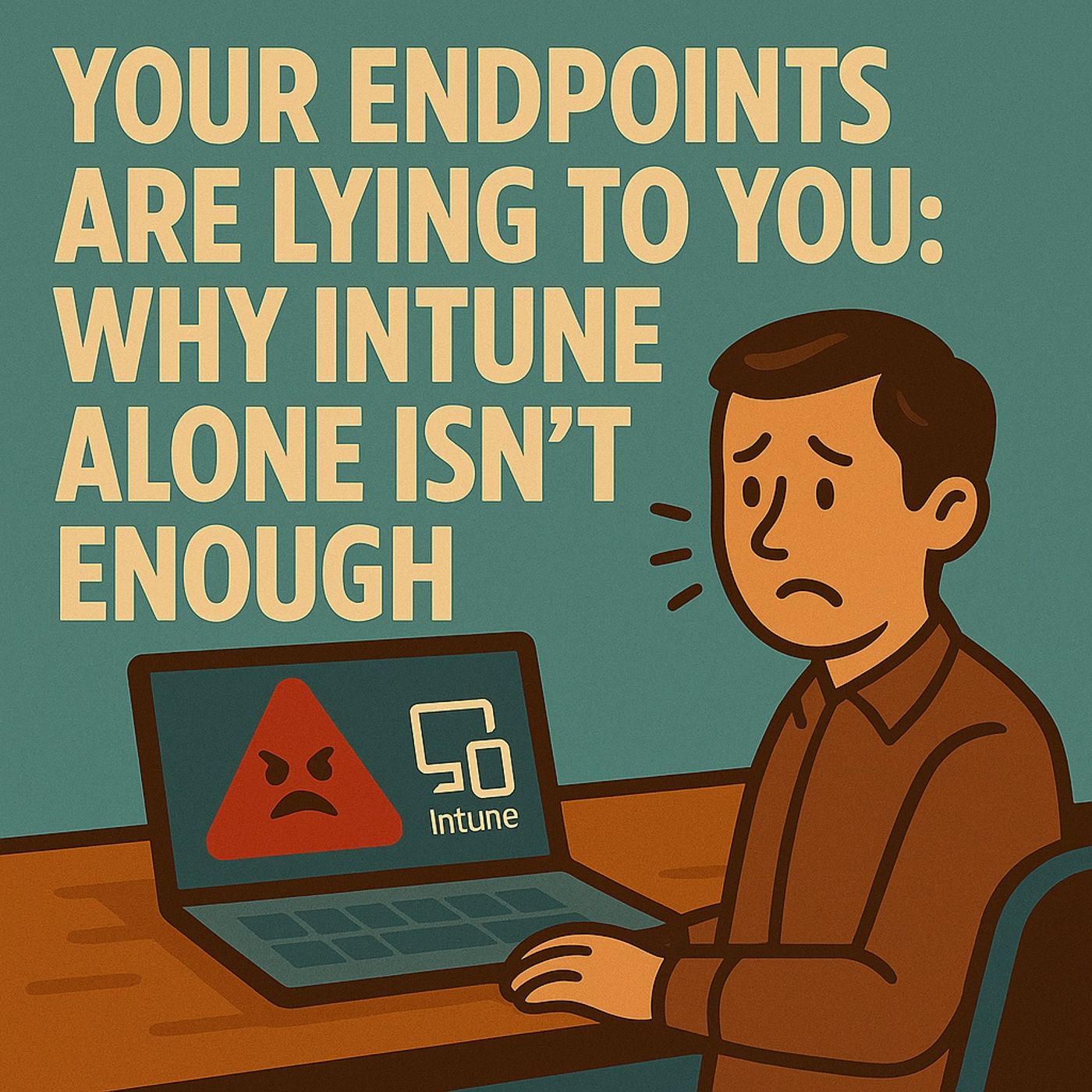M365 Show Podcast

M365 Show Podcast
Podcast Description
Welcome to the M365 Show — your essential podcast for everything Microsoft 365, Azure, and beyond. Join us as we explore the latest developments across Power BI, Power Platform, Microsoft Teams, Viva, Fabric, Purview, Security, and the entire Microsoft ecosystem. Each episode delivers expert insights, real-world use cases, best practices, and interviews with industry leaders to help you stay ahead in the fast-moving world of cloud, collaboration, and data innovation. Whether you're an IT professional, business leader, developer, or data enthusiast, the M365 Show brings the knowledge, trends, and strategies you need to thrive in the modern digital workplace. Tune in, level up, and make the most of everything Microsoft has to offer. m365.showBecome a supporter of this podcast: https://www.spreaker.com/podcast/m365-show-podcast--6704921/support.
Podcast Insights
Content Themes
The show covers a broad range of topics related to Microsoft technologies, including automation techniques in SharePoint, the integration of Dynamics 365 with Teams, advanced data management within Microsoft Fabric, and productivity enhancements through tools like Power BI and Viva Connections, with specific episodes showcasing practical examples like building site scripts, setting up custom dashboards, and optimizing platforms for specific use cases.

Welcome to the M365 Show — your essential podcast for everything Microsoft 365, Azure, and beyond. Join us as we explore the latest developments across Power BI, Power Platform, Microsoft Teams, Viva, Fabric, Purview, Security, and the entire Microsoft ecosystem. Each episode delivers expert insights, real-world use cases, best practices, and interviews with industry leaders to help you stay ahead in the fast-moving world of cloud, collaboration, and data innovation. Whether you’re an IT professional, business leader, developer, or data enthusiast, the M365 Show brings the knowledge, trends, and strategies you need to thrive in the modern digital workplace. Tune in, level up, and make the most of everything Microsoft has to offer.
Become a supporter of this podcast: https://www.spreaker.com/podcast/m365-show-podcast–6704921/support.
Watcher, heed this record. Most teams believe Intune is “handled”—until they try to run it across tens of thousands of laptops, phones, kiosks, and shared devices. Then the logs fill with noise, drift creeps in, and humans become the bottleneck. In this episode, we show you how to treat Intune as the control plane and Azure as the engine—binding Managed Identities, Automation, Functions, and Microsoft Graph into a self-healing device estate that repairs itself before dawn. By the end, you’ll know how to:
- Use Intune for declarative policy, not manual cleanup
- Let Azure Automation & Functions close the loops humans forget
- Build keyless, least-privilege control with Managed Identities
- Turn Graph + Log Analytics into a single source of truth for posture, drift, and MTTR
- Design a device platform that corrects, cleans, and reconciles itself at scale
🔥 Part I — Why Intune Alone Doesn’t Scale We start with the uncomfortable truth:
Intune is necessary, but not sufficient. You’ll hear the seven wounds that appear when Intune is left to carry everything:
- Manual Process Hell
- Exports, blade-clicking, chasing single devices
- Works at 100 endpoints; collapses at 10,000
- MTTR grows; humans become the queue
- Configuration Drift
- Same policy, different actual states
- Deferred reboots, half-applied scripts, missed check-ins
- No automatic reconciliation = drift piles up
- Overpowered Humans
- Global Admin summoned “just this once”
- Broad roles, shared secrets, one-off fixes that never die
- Least privilege becomes theory, not practice
- Conditional Access Chaos
- Sprawling policies, cryptic names, inconsistent user prompts
- No single ledger tying access failures to device posture & policy evaluation
- Scattered Ownership
- Certs, scripts, patching, onboarding all owned by different teams
- No one owns the end-to-end flow from enroll → secure → retire
- Never-Cleaned Device Graveyards
- Stale, lost, and loaner devices still reported as “active” or “compliant”
- Metrics lie, policies target corpses
- Patching Without Orchestration
- Rings exist, but no workflow logic:
- Patch only when Defender is healthy
- Only reboot in real maintenance windows
- Escalate when a device ignores multiple summons
- Rings exist, but no workflow logic:
We reframe the core idea: Intune declares. Azure enforces.
Intune shouldn’t remember, reconcile, and repair without Azure at its side. 🧩 Part II — What Happens When You Combine Intune with Azure Then we show what changes when you let Azure carry the heavy execution: Azure Automation — The Clock That Never Forgets
- Nightly jobs to:
- Sweep stale devices and disable/retire them
- Renew certificates before expiry
- Check for configuration drift and trigger remediation
- Adds nuance Intune alone can’t: time zones, retry logic, health checks, grace periods
Managed Identities — Keyless, Least-Privilege Hands
- No more secrets in scripts or pipelines
- System-Assigned Managed Identities on Automation / Functions
- Narrow Graph permissions:
- Device.Read.All for inventory
- DeviceManagementConfiguration.Read.All for policy view
- Minimal write scopes for specific actions
- Identity dies with the workload; power is explicit and auditable
Entra ID Governance — Least Privilege as Law
- Role separation: device managers, policy authors, security readers, break-glass
- PIM for just-in-time elevation, approvals, and auto-expiry
- Conditional Access that actually respects device posture & risk signals
Azure Functions — The Nerves That React in Seconds
- Event-driven responses to:
- Device enrollment
- Compliance state changes
- Webhooks & alerts
- Examples:
- Tag devices on enrollment and push them into the right dynamic groups
- Quarantine non-compliant devices via group-based Conditional Access
- Log every decision into Log Analytics
Microsoft Graph & Log Analytics — The Road & The Ledger
- Graph as the single API to devices, users, groups, and policies
- Log Analytics as the ledger of record:
- Drift variance by policy
- MTTR by device type
- Cleanup rates for stale devices
- KQL turns hunches into charts instead of arguments
📜 Part III — Real Enterprise Scenarios (With Numbers) We walk through three real-world patterns: 1. The Device Graveyard Cleanup
- Nightly Runbook under Managed Identity:
- Find devices unseen for 60 days
- Exclude tagged loaners/lab/break-glass
- Disable, notify owners, log to Log Analytics
- Results:
- ~9% cleanup in week one
- ~42% reduction in stale devices by day 30
- Conditional Access stops treating ghosts as compliant
2. Zero-Touch Onboarding That Actually Works
- Enrollment event triggers Function:
- Read hardware & purchasing details
- Stamp tags: region, role, security baseline
- Auto-add device to dynamic groups & policy sets
- Automation jobs follow up with cert checks & early health checks
- Results:
- Onboarding time cut from 9 business days → ~90 minutes
- 60%+ drop in “new device not ready” tickets
Become a supporter of this podcast: https://www.spreaker.com/podcast/m365-show-podcast–6704921/support.

Disclaimer
This podcast’s information is provided for general reference and was obtained from publicly accessible sources. The Podcast Collaborative neither produces nor verifies the content, accuracy, or suitability of this podcast. Views and opinions belong solely to the podcast creators and guests.
For a complete disclaimer, please see our Full Disclaimer on the archive page. The Podcast Collaborative bears no responsibility for the podcast’s themes, language, or overall content. Listener discretion is advised. Read our Terms of Use and Privacy Policy for more details.